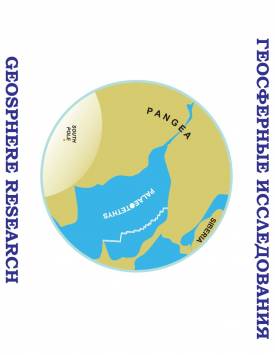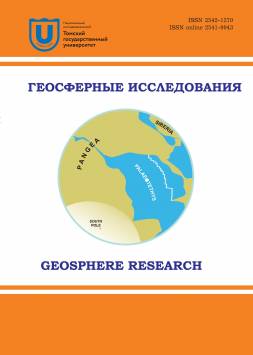Structure of greenhouse gas emissions from fossil fuel production facilities in Russian regions
The development of measures and technologies for reduction of greenhouse gas emissions requires assessing the existing emission sources and obtaining a quantitative estimate of the emissions. A significant contribution to greenhouse gas emissions is made by the energy sector, which includes not only generation facilities that burn fossil fuels to produce heat and electricity but also enterprises engaged in their extraction. As an approach for calculating greenhouse gas emissions from the extraction of fuel and energy resources, the methods developed at the Institute of Global Climate and Ecology named after Yu.A. Israel. These methods for quantifying greenhouse gas emissions are based on the Guidelines of the Interstate Group of Experts on climate change from 2006, supplemented by national methodological developments, taking into account domestic experience in conducting inventories and scientific research. To estimate greenhouse gas emissions, national emission coefficients were used, taking into account the territorial aspect. Such coefficients are developed for different types of fuels based on their physico-chemical properties used in various fields of activity. The calculation of greenhouse gas emissions from the extraction of fuel and energy resources includes an assessment of emissions into the atmosphere directly from the extraction of coal and hydrocarbons, as well as subsequent operations with resources. The calculation of the amount of greenhouse gas emissions (carbon dioxide and methane) during coal mining was carried out taking into account the open and closed production methods. Estimates of greenhouse gases entering the atmosphere during hydrocarbon production take into account certain types of activities: drilling, testing and maintenance of existing oil wells; extraction and primary processing of natural gas; transportation of hydrocarbons; storage of natural gas; gas distribution; flaring of petroleum (associated) gas; gas disposal during oil and gas production; natural gas flaring during gas extraction and primary processing. An assessment of the spatial distribution of greenhouse gas emissions made it possible to identify the main activities that cause greenhouse gas emissions during the extraction of energy resources and to determine which Federal Districts of Russia are the major contributors. As a result, it is obtained that the total estimated greenhouse gas emissions in Russia from the extraction of fuel and energy resources are estimated at 208 million tons of CO2-eq, with a predominant share of 67 % from activities in the field of hydrocarbon production (oil, condensate and natural gas). In spatial distribution the estimations of greenhouse gas emissions from the extraction of fossil energy resources show the significant predominance of the emissions in the Urals and Siberian Federal Districts, which account for 74 % of the Russian indices. That being said, whereas coal-mining emissions prevail in the Siberian Federal District, hydrocarbon production emissions predominate in the Urals Federal District. Contribution of the authors: the authors contributed equally to this article. The authors declare no conflicts of interests.
Keywords
coal, hydrocarbons, methane, carbon dioxide, emission factorAuthors
| Name | Organization | |
| Maysyuk Elena P. | Melentiev Energy Systems Institute, SB RAS | maysyuk@isem.irk.ru |
| Ivanova Irina Yu. | Melentiev Energy Systems Institute, SB RAS | nord@isem.irk.ru |
| Saneev Boris G. | Melentiev Energy Systems Institute, SB RAS | saneev@isem.irk.ru |
References

Structure of greenhouse gas emissions from fossil fuel production facilities in Russian regions | Geosphere Research. 2025. № 2. DOI: 10.17223/25421379/35/11
